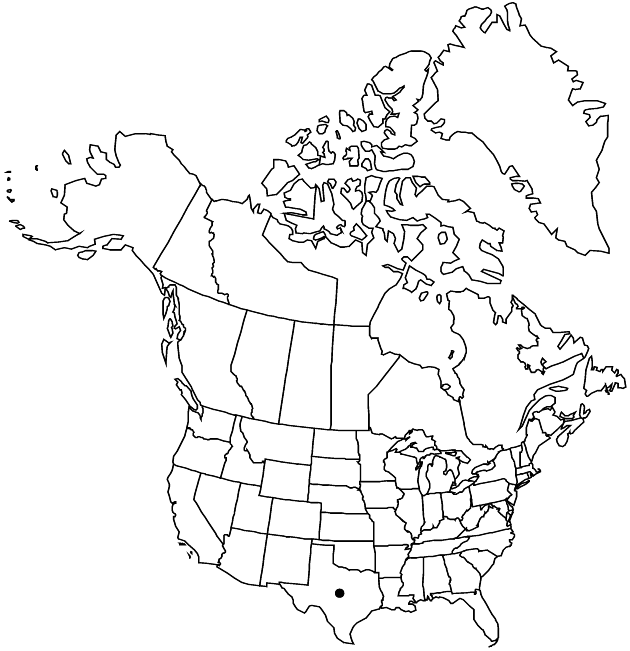Perityle cinerea
Sida 3: 278. 1968.
Plants 8–25 (–45) cm (profusely branched, densely leafy); densely tomentose-canescent. Leaves: petioles 6–10 mm; blades usually broadly ovate to subdeltate, rarely subreniform, 6–15 × 6–18 mm, margins deeply serrate (veins conspicuous). Heads borne singly or in corymbiform arrays, 8–10 × 4–7 mm. Peduncles 3–10 mm. Involucres narrowly campanulate. Phyllaries 8–16, linear-lanceolate to oblanceolate, 4–7 × 1–2 mm. Disc-florets 10–15; corollas white, tubes 1–1.6 mm, throats tubular, 2.4–3.2 mm, lobes 0.6–1.2 mm. Cypselae 2.6–3 (–3.5) mm; pappi of (10–) 14–20 bristles 1–3 mm. 2n = ca. 136.
Phenology: Flowering spring–fall.
Habitat: Crevices, limestone caprock of mesas
Elevation: 800–1300 m
Discussion
Of conservation concern.
Perityle cinerea is found in Pecos, Terrell, and Upton counties. The relatively short, appressed habit seen in some populations may be the result of browsing by sheep. Perityle vitreomontana and P. rupestris var. albiflora are thought to be closely related to the uniquely tomentose-canescent P. cinerea.
Selected References
None.
